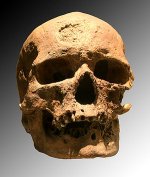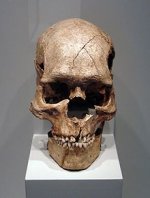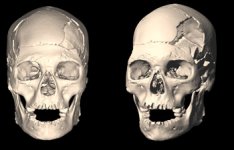Actually, the "old man of Cro-Magnon", France, had a broad face. It is at least 28000 years old:
View attachment 5797
Here is a long faced skull from Combe Capelle, France. But the problem is that it is only 8000 years old:
View attachment 5798
This is another long faced example from
Peștera cu Oase, Romania. It is the oldest known european, but the problem is that it is not yet distinctly "european". The brain cavity was relatively gracile compared to the huge malars. This phenotype is considered to be extinct today.
View attachment 5799
It is obvious that both, very broad and very long faced individuals were around in europe during the paleolithic. Only the later mediterranean phenotypes are exclusively long faced. The Combe-Capelle guy in particular could have been already an Atlanto-Med.




